Top image is of Red Army soldiers celebrating the end of war, May 2, 1945.
Bundesarchiv, Bild 183-E0406-0022-018.
Russian President Vladimir Putin has characterized the February 2022 invasion of Ukraine as an act of “self-defense” against a country dominated by “neo-Nazi” elements. He also claimed the invasion is justified because the Ukrainian government is carrying out a “genocide” against Russians in Ukraine.
In doing so, he appealed to the rhetoric and themes of the Soviet Union’s massive struggle against Adolf Hitler’s Third Reich on the Eastern Front during World War II.
The Second World War is still officially remembered in Russia and throughout the former Soviet Union as the Great Patriotic War (June 22, 1941 - May 9, 1945). It is difficult to overstate how important memory of the Soviet struggle has become to present-day Russia. A very selective narrative of that conflict with Nazi Germany forms an integral part of Russian political culture and a tool of policymaking. Understanding Soviet wartime mobilization helps us contextualize contemporary rhetoric.
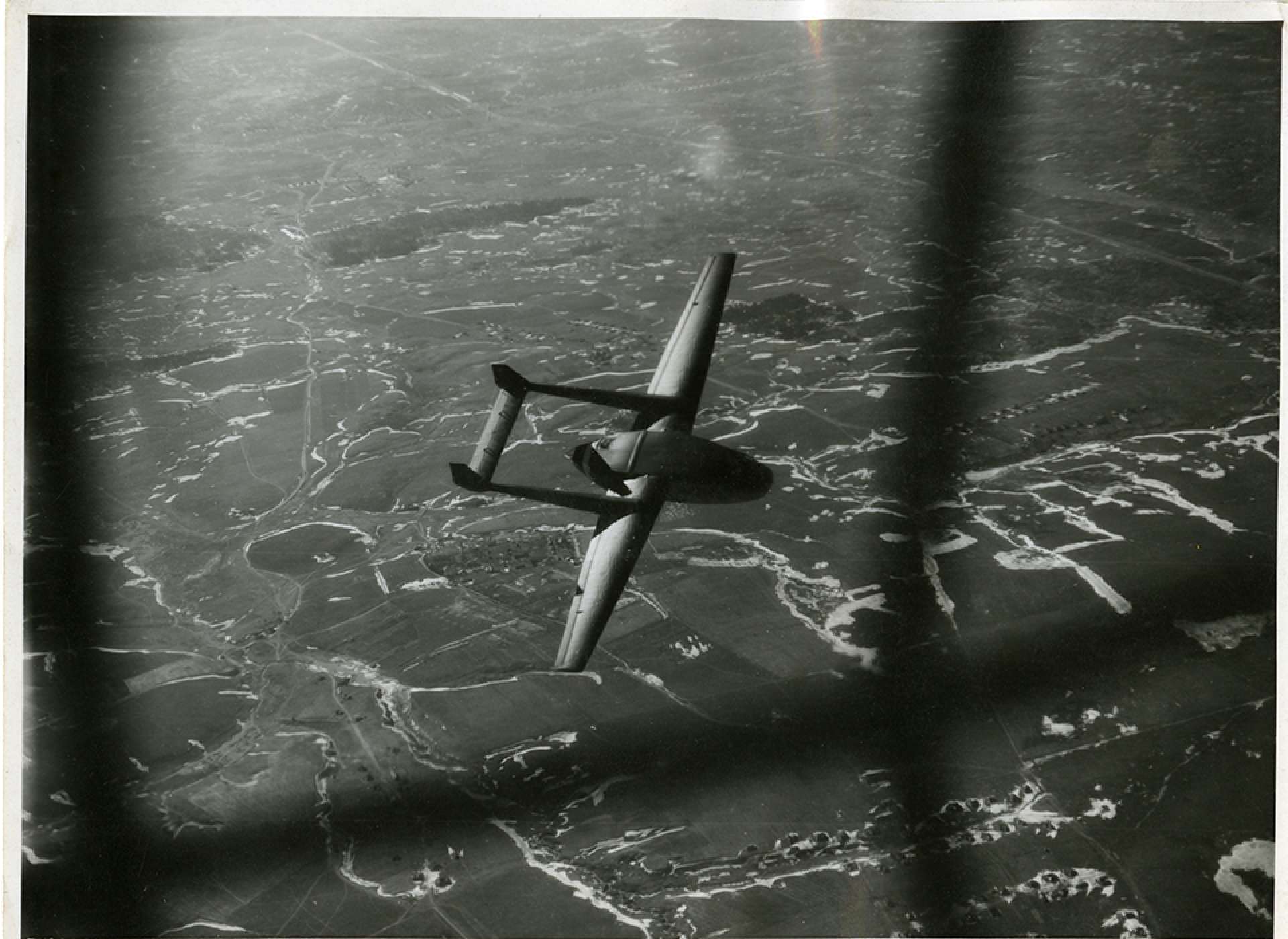
German transport glider over Smolensk, Russia, 1942. From the Collection of The National WWII Museum, 2011.403.227.
The Nazi War Effort in Ukraine and the East
The savagery of Nazi Germany’s Vernichtungskrieg (War of Annihilation) against Joseph Stalin and the Soviet Union defies comprehension. Prosecuted by the Nazis as a modern crusade against “Judeo-Bolshevism,” Operation Barbarossa, launched on June 22, 1941, involved 3,000,000 German soldiers and, eventually, more than 500,000 from countries allied with Hitler: Italy, Romania, Hungary, Finland, Slovakia, and Croatia, with Francisco Franco’s Spain also supplying troops. Eclipsing the brutality of the combat, stretching from the Arctic Circle to the Black Sea and Caucasus, was the deliberate targeting of entire groups of civilians in violation of centuries of laws and norms about warfare.
What later became known as the “Criminal Orders”—a set of policies ordered by Hitler and approved by leading figures in the German armed forces (such as Wilhelm Keitel and Alfred Jodl) involved sustained cooperation between the German military and Heinrich Himmler’s dreaded SS and related security agencies. Commissars and other Communist Party officials were to be immediately executed. Anyone merely suspected of resistance activity could be shot on the spot.
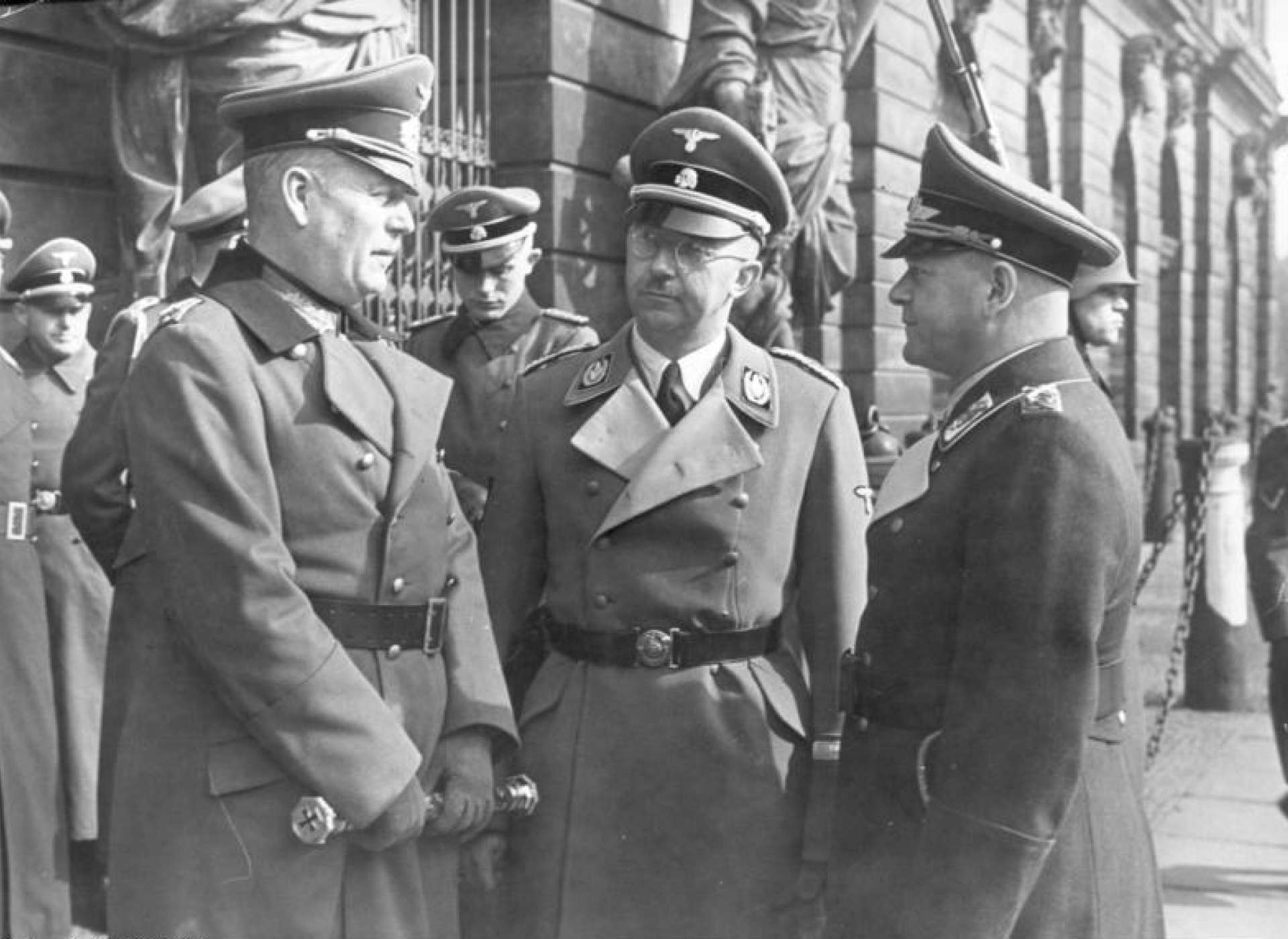
Wilhelm Keitel, Heinrich Himmler, and Erhard Milch in Berlin, March 1942. Bundesarchiv, Bild 183-J00683.
In a similar manner, Nazi Germany refused to afford Soviet prisoners of war the protections required in the Geneva and Hague Conventions. German historian Christian Streit documented in the late 1970s the barbarity with which the Germans treated Soviet prisoners of war. By war’s end, 57 percent of the 5.7 million Soviet soldiers taken into German captivity (3.3 million individuals) died from starvation, exposure, maltreatment, or outright execution. Blame for this monstrousness lies primarily with the German army.
Mobile killing squads, the Einsatzgruppen, staffed by SS, Gestapo, and other police personnel, hunted Jewish males of military age first. As the summer of 1941 wore on, they rejected any traditional concerns for women, children, and the elderly. During their “sweeps,” they murdered well over 1 million Soviet Jews (also known as the Holocaust by Bullets), conducting mass executions in pits, ditches, ravines, and forests.
It is important to remember, too, that the Nazis never had the chance to implement their General Plan for the East (Generalplan Ost)—a plan that envisioned the depopulation of major cities and the starvation of 30 million Soviets after the Stalin regime collapsed. Thus, Soviet Jews faced immediate death under the Third Reich’s rule, while non-Jewish citizens of the USSR confronted the prospect of, at most (if they did not perish from forced starvation), endless servitude.
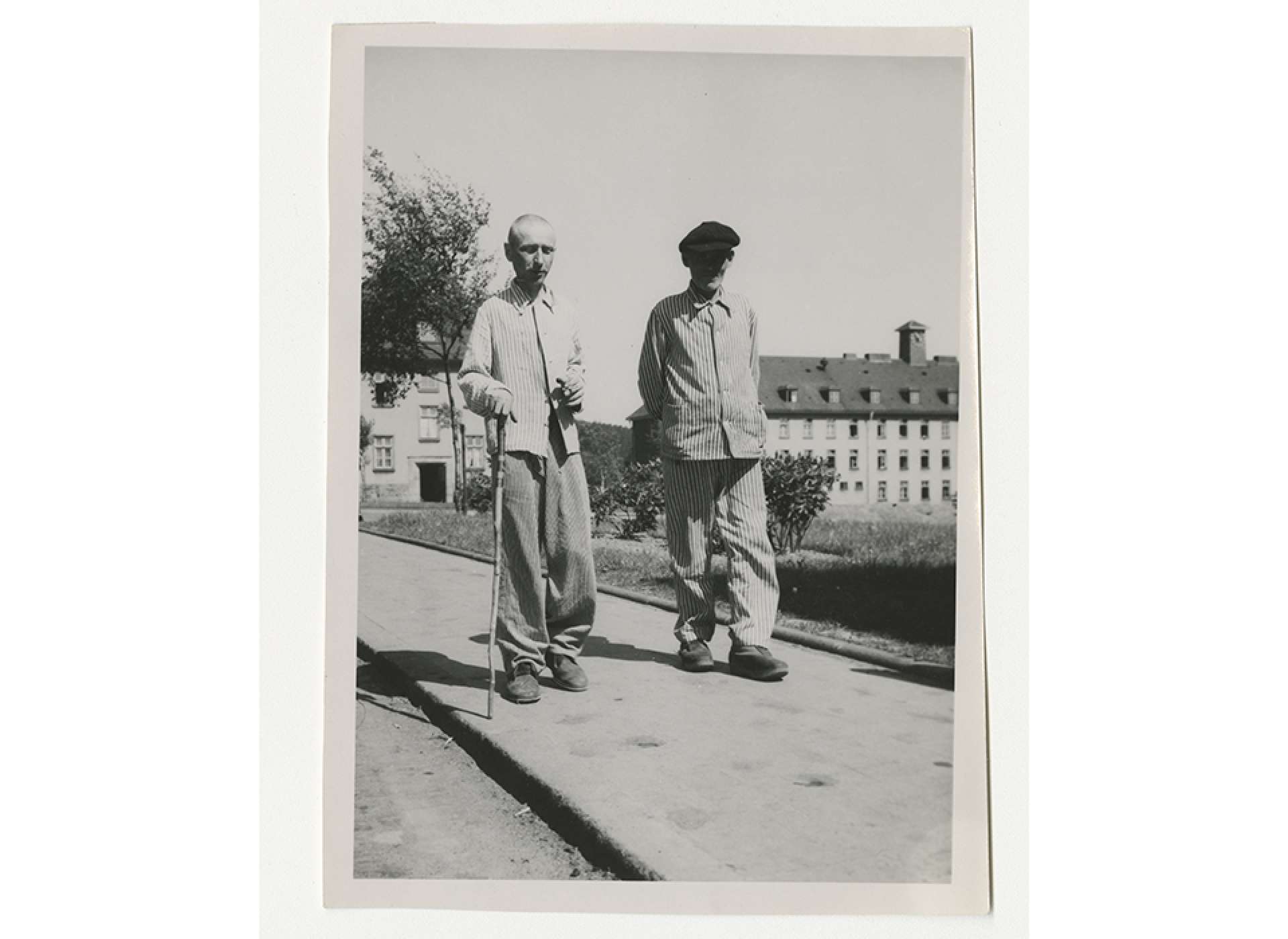
Former Soviet forced laborers. From the Collection of The National WWII Museum, 2001.490.188.
Ukraine held a particularly important place in German occupation policy. Because Ukraine was highly prized for its agricultural production and raw materials, the Nazi leadership established the Reichskommissariat Ukraine in late summer 1941 under the reprehensible Erich Koch. Some 17,000,000 inhabitants fell under its jurisdiction by 1943.
Higher SS and Police officials, like Friedrich Jeckeln and Hans-Adolf Prützmann, and Einsatzgruppen C (under Otto Rasch) and D (led by Otto Ohlendorf) administered the mass murder of more than a million Jews in Ukraine alone. The pioneering works of Wendy Lower and Karel Berkhoff have supplied crucial details about the German-led slaughter at Babi Yar, Chernihiv, Zhytomyr, and Odessa, among other sites of mass killing (this does not count what happened to Jews and to Roma in Transnistria, Ukrainian territory annexed by Romania), which depended on assistance from local and foreign auxiliaries.
Ukrainian nationalists, such as Stepan Bandera and Andrij Melnyk, rival leaders in the Organization of Ukrainian Nationalists (OUN) and eager to free themselves from brutal Soviet dominance, collaborated with the Nazis in the early phase of occupation. Many others, however, resisted vicious German rule (and both Bandera and Melnyk eventually turned against Hitler).
Soviet Rhetoric and the Enduring Themes of
the Great Patriotic War
In February 2022, the Russian government tapped this history of the Nazi regime’s crimes against humanity. Ultimately World War II, or the Great Patriotic War as the Stalin regime designated it, necessitated one of the largest mobilizations of human beings, animals, and materiel of all sorts in recorded history. Such a herculean undertaking was couched in the language of defense of the Motherland—in other words, in a nationalist idiom, not the revolutionary proletarian internationalism with which the Bolsheviks fought and won the Russian Civil War of 1918-21. By any and all means the enemy, designated as “Hitlerism” or the “fascist hordes,” had to be expelled from the Motherland and destroyed.
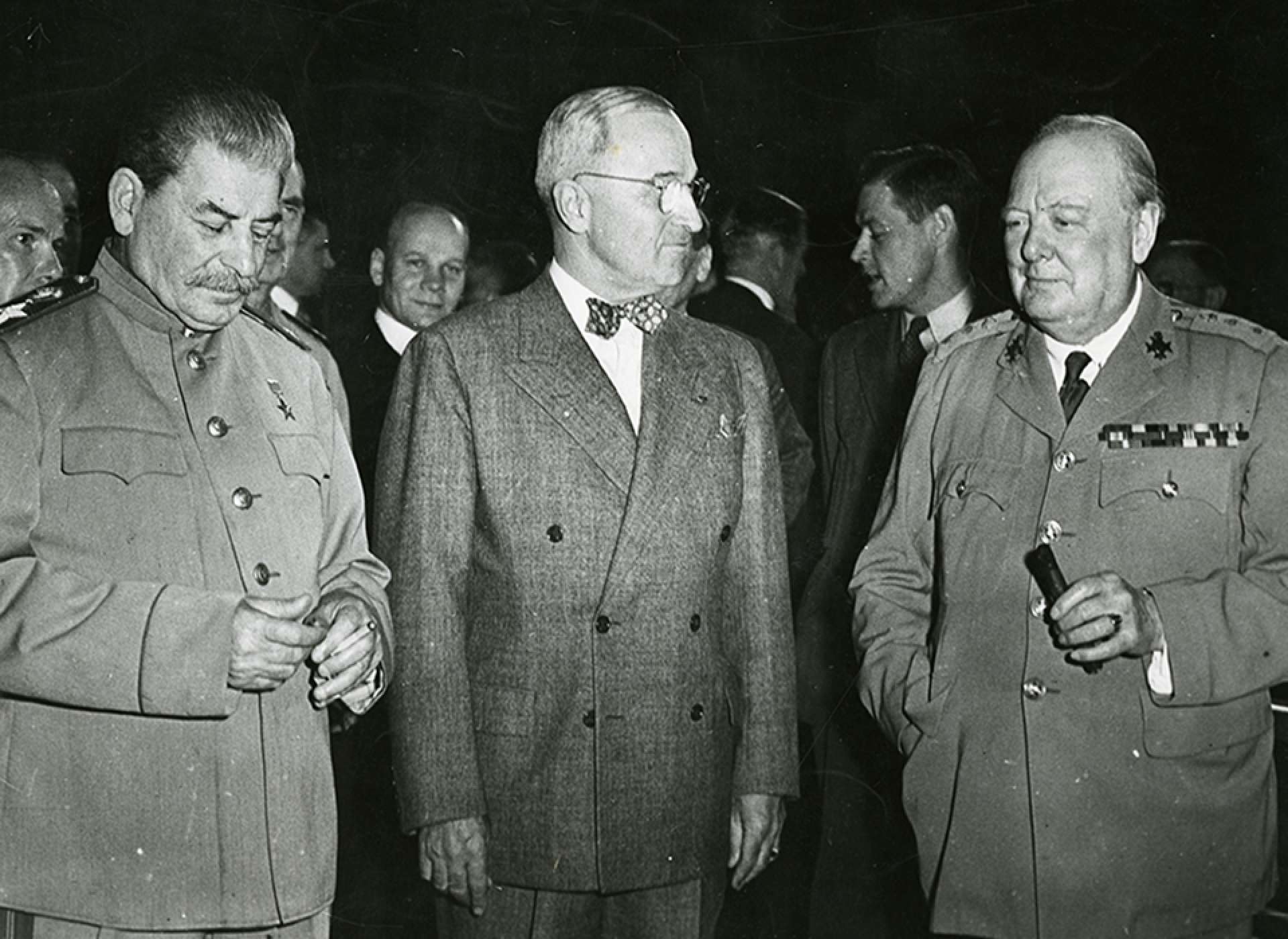
Josef Stalin of the USSR, US President Harry Truman, and British Prime Minister Winston Churchill stand together at the Potsdam Conference, July 1945. From the Collection of The National WWII Museum, 2012.019.774.
According to Brandon Schechter, more than 34,000,000 Soviets served in the armed forces between 1941 and 1945. Over 800,000 of them were women who embodied the remnants of Marxist egalitarianism not obliterated by Stalin. These women did everything—fighting and dying in the infantry, as pilots, and in armored units, as well as tending to the wounded as nurses.
More than 200,000 plants and factories were dismantled, moved out of harm’s way, and reconstructed. Stalin even eased his regime’s hostility towards the Orthodox Church in order to receive the full blessings for the war effort from the Metropolitan of Moscow. Wartime propaganda emphasized the unity of the dozens of ethnic groups in the Union of Soviet Socialist Republics in the struggle against the fascist menace.
Russians, Ukrainians, Georgians, Kazakhs, Uzbeks, Armenians, and others came together under the red banner to repel the “Hitlerite” aggressor. Celebration of Stalin as “father of nations,” already begun in 1936, received new impetus with Operation Barbarossa.
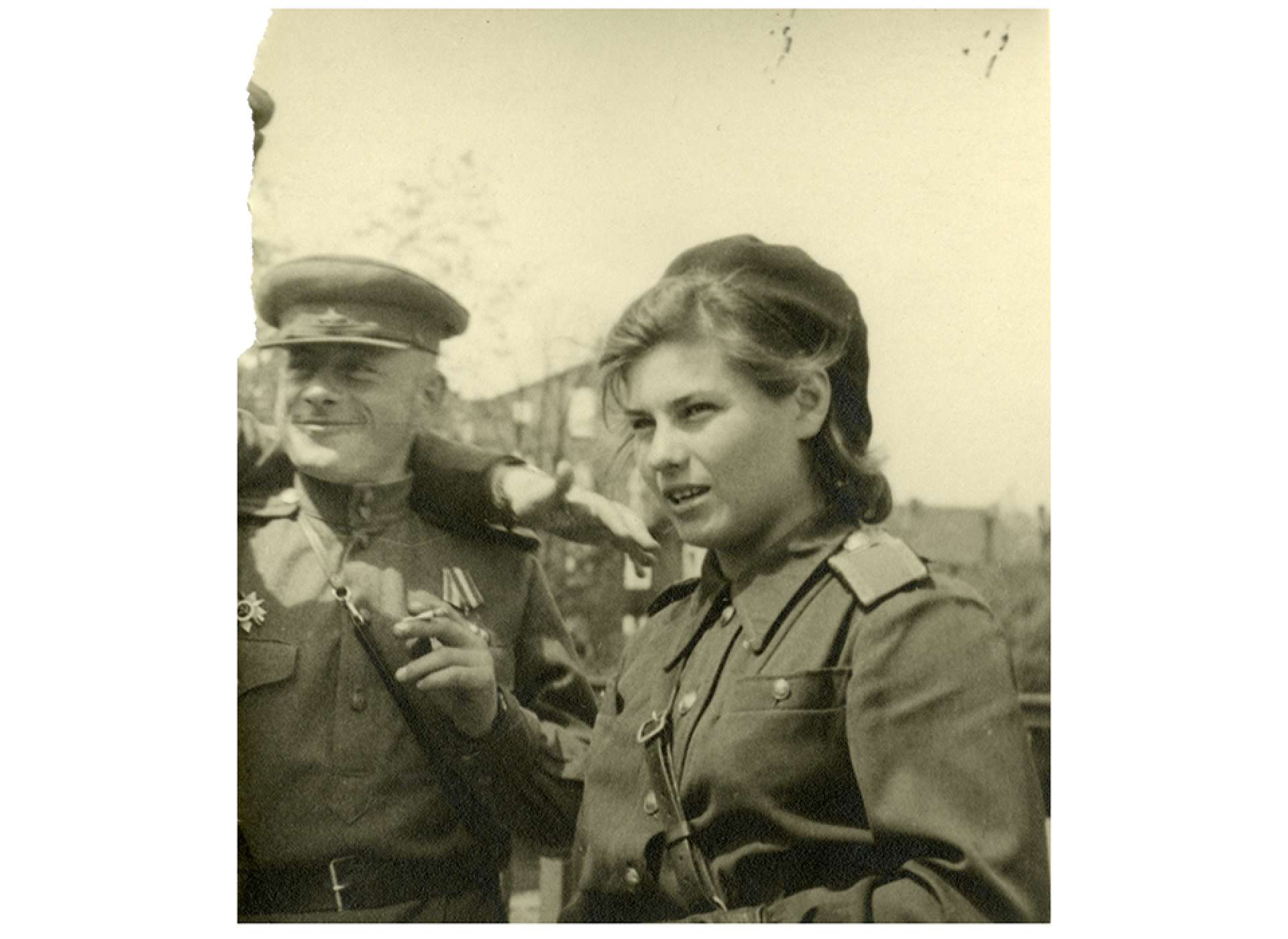
Russian male and female soldiers, Berlin, Germany in April 1945. The male soldier wears the Order of the Patriotic War. From the Collection of The National WWII Museum, 2009.131.021.
After the horrendous defeats experienced in the summer and fall of 1941, the heroic Soviet defense of Moscow in late autumn of that year saved the capital from the Germans and represented a “first, faltering step, a brief success” (the words are Richard Overy’s). Leningrad, encircled by German Army Group North, never fell, despite a 900-day siege. In 1942-43, victories at Stalingrad and Kursk stripped the initiative for good from Nazi Germany on the Eastern Front.
Enormous partisan forces, growing to as many as 500,000 strong, operated behind the lines and forced the Germans to divert significant numbers of men and resources to combat them. During the subsequent road to Berlin, the USSR’s military exhibited its immense talents under effective commanders such as Georgi Zhukov, Konstantin Rokossovsky, and Ivan Konev.
World War II finally cost the USSR 24,000,000 killed. From that staggeringly high number (the highest of any nation that fought in the war), between 8,000,000 and 11,000,000 were combat deaths. Driving the Germans out of Ukraine entailed a million casualties alone. Whole areas of the country—urban and rural—lay in ruins with millions of homes demolished.
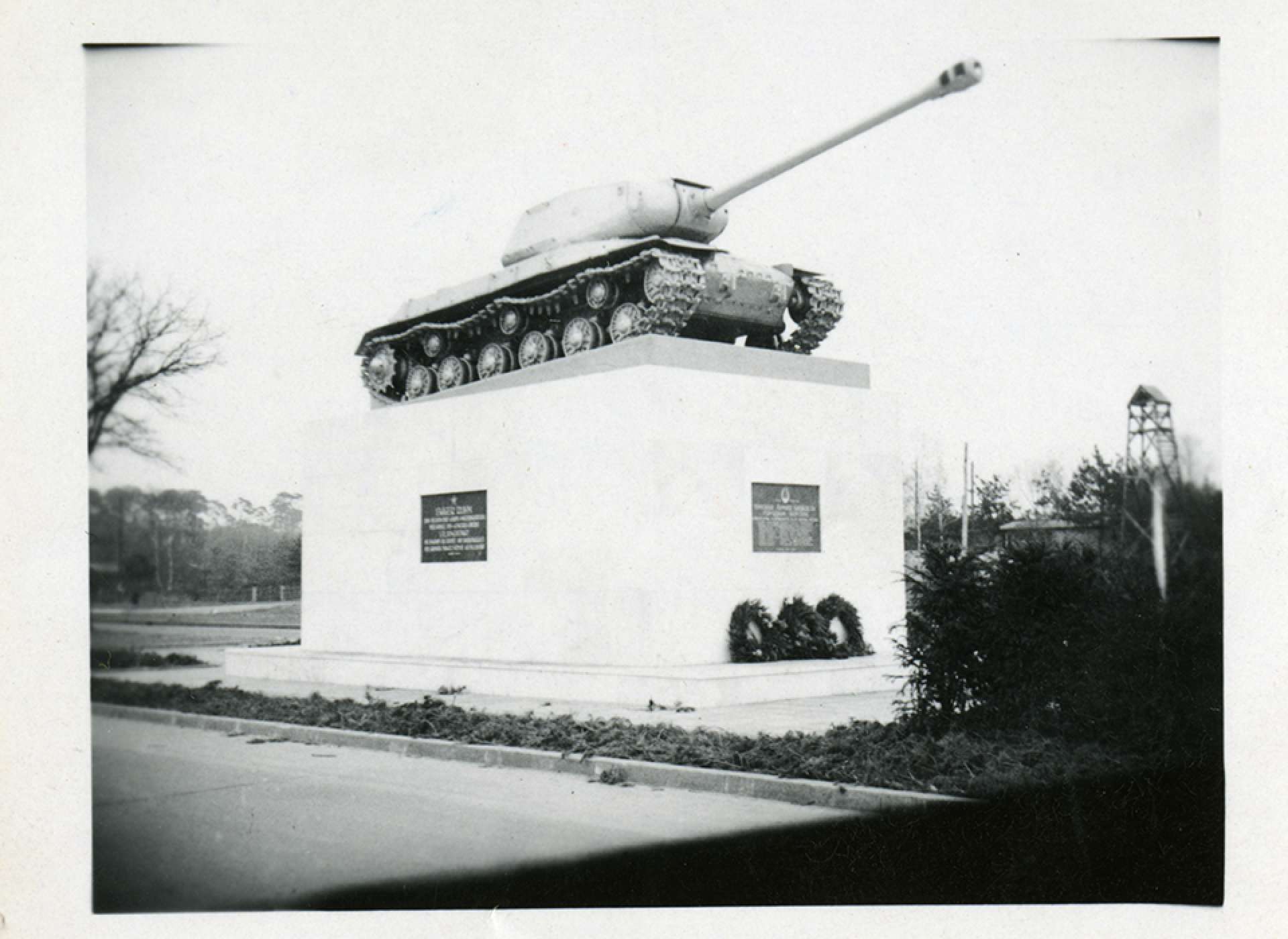
Soviet “Iosif Stalin” tank (or IS tank) on display on pedestal in postwar Berlin. “First Russian tank to reach Berlin.” 1945-46. From the Collection of The National WWII Museum, 2011.168.460.
To this day, Russia celebrates the triumph over Hitler on May 9, Victory Day. The elaborate ceremony at the Tomb of the Unknown Soldier at the Kremlin, where the remains of Red Army soldiers who died defending Moscow are buried, has been an annual broadcasting event.
Memory of the Great Patriotic War took on new and expanded meaning in the 1990s after the dissolution of the Soviet Union, compensating somewhat for the decline of Russian power. That the undeniable sacrifice and resilience of the USSR’s armed forces and Soviet workers and peasants are often not fully acknowledged in Western Europe or the United States has fed public resentment in Russia. How long would it have taken to defeat the Axis Powers without the Red Army’s victories at Stalingrad and Kursk, without Operation Bagration, the Second Jassy-Kishinev Offensive, the Vistula-Oder Offensive, or the bloody assault on Berlin in April-May 1945?
In the early 2000s, the propaganda of the Soviet struggle against Axis aggression became essential to a new state ideology in Russia organized around the aim of a return to greatness. The themes of defense of the Motherland, anti-Nazism, national unity, and martial heroism form its core. Soviet prominence in great-power politics at that time (e.g. the Tehran and Yalta conferences) is always touted. Remembrance of victory over fascism buttresses a renewed Russian nationalism.
During Russia’s 2022 invasion of Ukraine, this narrative of the Great Patriotic War was activated and deployed as a justification for the war. By charging the democratically-elected government of Ukraine with Nazism and systematic violence against ethnic Russians, President Putin hoped to win the backing—or at least consent—of the Russian public. This resulted in recourse to a powerful set of existing collective memories about the suffering inflicted on the peoples of the Soviet Union by Hitler’s forces and those who collaborated. The turn to those themes also reflected the enduring appeal of the Great Patriotic War as a period of national unity and sacrifice for the good of Mother Russia.
Jason Dawsey, PhD
Jason Dawsey, PhD, is ASU WWII Studies Consultant in the Jenny Craig Institute for the Study of War and Democracy.
Cite this article:
MLA Citation:
APA Citation:
Chicago Style Citation:
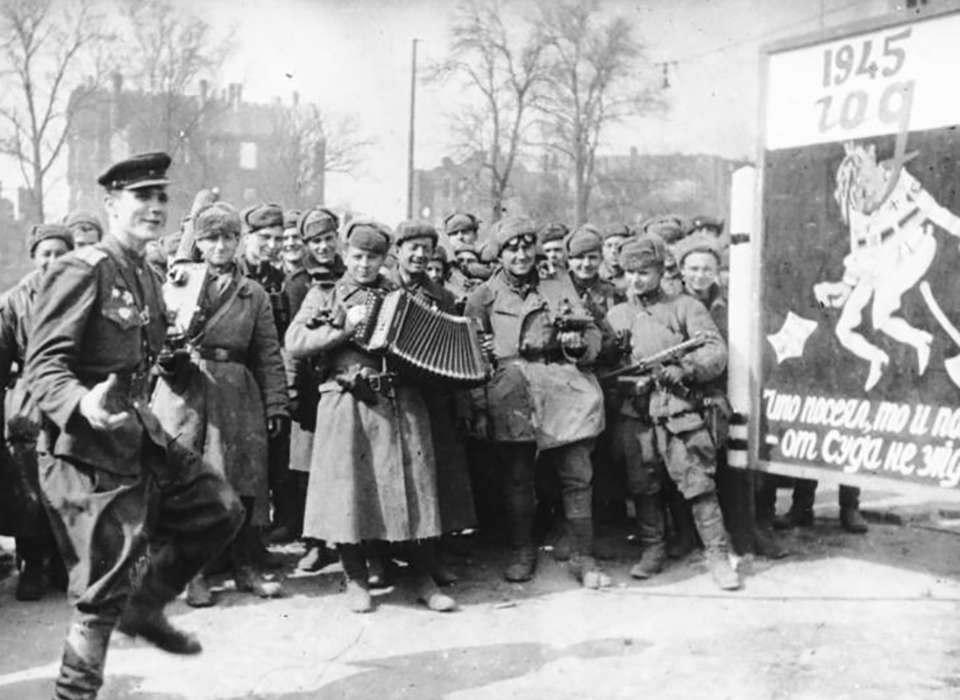




![Max Fuchs, New York City cantor, sings as Rabbi Sydney [sic] Lefkowitz, Richmond, VA, conducts the first Jewish services from Germany.](/sites/default/files/styles/max_650x650/public/2025-10/image1.jpg)



